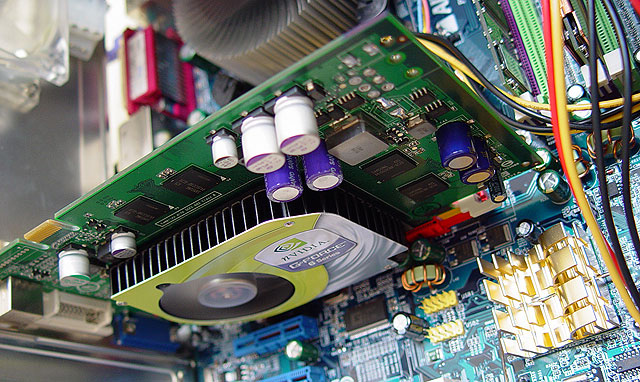Page 7
Overclocking & TweakingBefore we dive into an extensive series of tests and benchmarks, we need to explain overclocking. With most videocards, we can do some easy tricks to boost the overall performance a little. You can do this at two levels, namely tweaking by enabling registry or BIOS hack, or even tamper with Image Quality and then there is overclocking, which by far will get you the best possible results.
What do we need?
One of the best tools for overclocking NVIDIA and ATI videocards is our own Rivatuner, which you can download here. If you own a NVIDIA graphics card then NVIDIA actually has very nice built in options for you at that can be found at the display driver properties. They are hidden though and you need to enable it by installing a small registry hack called CoolBits, which you can download right here (after downloading and unpacking just click the .reg file twice and confirm the import).
Where
should we go ?Overclocking: by increasing the frequency of the videocard's memory and GPU, we can make the videocard increase its calculation clock cycles per second. It sounds hard but it really can be done in less then a few minutes. I always tend to recommend to novice users and beginners not to increase the frequency any higher then 5-10% of the core and memory clock. Example: If your card would run at 300 MHz then I suggest you don't increase the frequency any higher than 330 MHz.
More advanced users push the frequency often way higher. Usually when your 3D graphics will start to show artifacts such as white dots ("snow"), you should go down 10 MHz and leave it at that.
The core can be somewhat different. Usually when you are overclocking too hard, it'll start to show artifacts, empty polygons or it will even freeze. I recommend that you back down at least 15 MHz from the moment you notice an artifact. Look carefully and observe well.
All in all... do it at your own risk. Overclocking your card too far or constantly to its maximum limit might damage your card and it's usually not covered by your warranty.
You will benefit from overclocking the most with a product that is limited or you may call it "tuned down." We know that this graphics core is often limited by tact frequency or bandwidth limitation, therefore by increasing the memory and core frequency we should be able to witness some higher performance results. A simple trick to get some more bang for your buck.
The GeForce 6600 at default clock speeds is doing 500 MHz. It's GDDR3 memory is 2x500 thus 1000 MHz. Overclocked it was capable of running at 550 MHz core and 1110 MHz memory frequency.

The Test System
Now we begin the benchmark portion of this article, but first let me show you our test system.
| Test system |
|
Benchmark Software Suite:
Remark - Image Quality between ATI and NVIDIA cards really is about equal. Since ATI has enabled Trilinear optimizations in their X800 series we enabled that option for the GeForce 6800 series also.
The Anisotropic filtering setting that enables itself in the ForceWare drivers when you enable AF/AA settings has been disabled by us unless noted otherwise, this to make the bechmarks as objective as they can be for future comparisons. All tests where made in 32 bit per pixel color in resolutions ranging from 800x600 pixels up to the Godfather of all gaming resolutions: 1600x1200 with several performance/quality settings.
|
